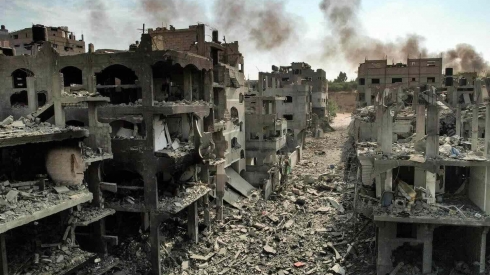Key Points
Though the Palestinian Authority (PA) appears to be at the center of Palestinian politics, it has brought few real changes to the way the West Bank is governed over its 22 years of existence.
In part due to the Palestinian Authority’s weakness, the two-state solution has failed. The only alternative, however, is not the one-state solution, but variations on the current status quo – all of which lead to a more intensified condition of apartheid.
In time, with a more amenable regional and international atmosphere, a different scenario – revolutionary in nature – may become the alternative to apartheid.
What Changed in Governance post-Oslo (and What Didn’t)
Despite the existence of the Palestinian Authority since 1994, much of the pre-Oslo Accords governing framework for the West Bank has remained. Under the PA, for example, municipalities and committees for refugee camps have continued to function as they did prior to the PA’s establishment. The religious institutions of the West Bank’s various communities mainly govern family and personal status laws, as they did pre-PA. Further, the PA has retained the use of military courts as adopted by the PLO. The respective judicial and legislative systems of the West Bank and Gaza Strip have remained separate as well.
However, there is one sector in which the PA has real influence: security. The PA has created a huge network of civil servants and security forces that are dependent on it for their livelihood. They in turn serve the PA by helping to keep it alive and allowing it to maintain a minimum degree of control over the population. Yet even the security apparatus is fragmented. For instance, internal systems are disconnected, and information is rarely circulated among departments. Thus there is no real cohesive or smoothly functioning Palestinian body politic in the Occupied Palestinian Territory (OPT).
Likely Scenarios for the PA’s Future: More (and More) of the Same
The PA has not been governing the Gaza Strip since 2007, and one can argue that it also has not been governing the West Bank. Yet the PA’s tenure will probably continue for the short and medium term. This is because of the likely perpetuation of the status quo, which is shored up by the continued fragmentation of the West Bank and Gaza Strip.
The PA’s tenure will likely morph into an intensified version of more of the same – what the author calls StatusQuo+. StatusQuo+ refers to a state of Palestine that is a non-sovereign entity and completely dependent on the international donor community and Israel. Under this system, Israel would continue to increase areas under its control, and the PA would continue to be in charge of the Palestinian population, without any authority vis-à-vis the Israelis. Palestinian political and economic elites would continue to profit from privileges of the occupation authority. This system would institutionalize apartheid.
StatusQuo+ means the demise of the two-state solution. Yet the likely alternative is not the one-state solution, but the no-state solution. This would mean the maintenance and intensification of the self-government authorities of the local Palestinian population – but in domains proscribed by Israeli authorities. The no-state solution could then lead to a three-state solution: Besides Israel, which would maintain territory obtained in 1948 plus the expanded route of the Separation Wall, Palestinians would establish a mini-state in the Gaza Strip. The third state would be in the West Bank, minus East Jerusalem, and it would be an apartheid regime that with time would become a bi-national state. With more time, it could be incorporated into Israel proper, or perhaps simply become a more and more Jewish state.
The Failure of the Two-State Solution and Revolutionary Possibilities
There are many reasons why the two-state solution has failed, including the increasingly irreversible separation of the West Bank and Gaza Strip, the PA’s dependence on Israel as the occupation authority, and the continued fragmentation of the West Bank due to settlements, byroads for settlers, and the Separation Wall.
The first two scenarios resulting from this failure – StatusQuo+ and the no-state solution – would likely lead to “stability” in the short and medium term. The third scenario – the three-state solution – would result in further fragmentation of the Palestinian body politic. Yet the stability would not be real; it would only be the result of the containment of the local population and of the management of regional and international pressures. Such arrangements are unsustainable in the long term, as people cannot be controlled in such a way forever. Indeed, with time, and with a more amenable regional and international atmosphere, a fourth scenario – revolutionary in nature – could become the alternative to the status quo.
The Article is also available in English, French, Italian (1&2), and Arabic.




